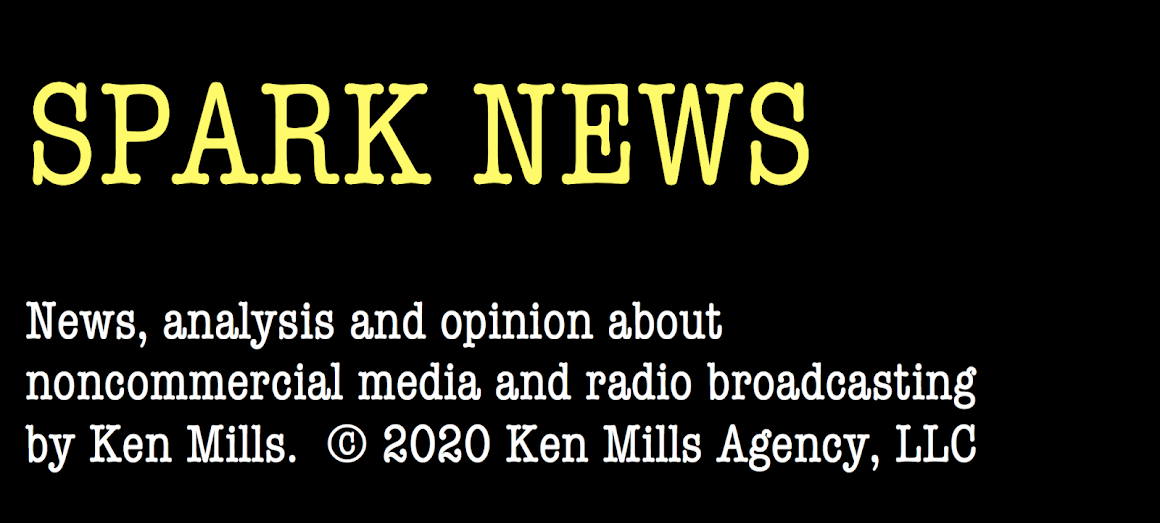On
Wednesday 10/14 I heard a fascinating segment on MPR’s Daily Circuit news program about where people hear their favorite
music. Program host Tom Weber talked with Fred Jacobs, Jacobs Media, Jim
McGuinn, program director of 89.3 The
Current and listeners regarding their listening habits. I recommend
listening to the whole thirty-minute segment at [link].
Below
is a transcript of a portion of the segment. I have paraphrased some of the
comments for clarity and brevity.
 |
| TOM WEBER, THE DAILY CIRCUIT |
TOM WEBER (TW): Today we are going to look
at where we get our music. Apple got into the music streaming business with an
online radio station called Beats 1.
There are two new stations for listeners here in the Twin Cities in the past
year: Hot 102.5 and Go 96.3. How are you, the music
listeners, adjusting your listening and habits? Are you listening for something
new or do you have your or are you looking for your old standbys? How important
is a DJ to you?
Fred,
there are so many ways to hear music these days, how is online streaming
affecting habits?
FRED JACOBS (FJ): It is a “long tail” kind
of situation. You think back, even 20 years, and the only place people could
enjoy music and discover new music was on the radio. But today there is such an
abundance of choices. Sometimes it is
overwhelming.
Jim,
I don’t know if there ever was a time when a radio program director like you could
count on a certain population to say: I only listen to one station. I don’t
know if that time ever existed.
 |
| JIM MCGUINN, 89.3 THE CURRENT |
JIM MCGUINN (JM): The closest time was the
60s and early 70s. Fred used the word abundance. This is the first generation has
access to everything that has ever been recorded at all time. Think about that.
Its true for television, movies – we have it all at our fingertips. It is
overwhelming. So we need filters. And
that could be YouTube. That could be
an algorithmic source like Pandora or
Spotify. That could be a website like Pitchfork or Rolling Stone or your friend’s social media. Or it could be a radio station, which is
still a reliable source for a lot of people.
TW: What do you get from one
source that is better than the others. Feel free to name names. Lets go to
phones. Here is Matthew from Woodbury:
CALLER: I spend most of my time in
my car listening to the radio. I use NPR
to keep me up to date. But streaming is not for me. I don’t listen to much
music at home. It is nice to have a pre-set radio. It is the safest thing to
use in a vehicle.
TW: There must be a lot of
people like the caller, Jim. Music is a thing they just listen in the car.
JM: We all have different
degrees of what is called lean forward or lean back experiences that we may
engage in at different times. When I say lean forward, that’s what has always
been there like putting a 45 rpm on a record player, maybe a CD, a cassette, an
MP3 file, an 8-track. That is you taking control of your own listening experience.
Lean
back is what you get out of radio or streaming services where you can put it on
and kick back and not work so hard at it. I think that is what the caller was
getting at – not wanting to work so hard it. That is the function that radio
serves.
TW: Fred, is the function –
lets talk about radio for a moment – the radio is the venue for passive
listening. What do radio stations have to do to stand out?
 |
| FRED JACOBS, JACOBS MEDIA |
FJ: Jim just hit on something
that is really important. There is something that is still magical about listening
to music on the radio and not knowing what is coming up next. What a lot of
radio stations are now asking: What jobs are consumers hiring them to do in
light of all of this choice in front of them.
We
keep circling the idea of curation. DJs who really know their stuff, the local
marketplace, bands that are coming to town. That is the bet that Apple is
making with Beats1. Hiring knowledgeable, fun DJs. Slacker now is going this
route with human beings as well. It may be coming back to personal, human curation,
which is very exciting for us in radio.
TW: Up this point, most of
what we’ve seen online. like Pandora
or Spotify, are just music. Apple
comes along this year and realizes that its iTunes model of downloading music
is fading and they start a station, that reviewers have pointed out, sounds just
like a radio station. Its not like they are reinventing the wheel.
FJ: Zane Lowe at Apple even
talked about brainstorming meeting they had when they were conceptualizing
Beats1. And he literally said, we have been trying to find another word for
radio and we couldn’t do it. When you look at all of these services like Slacker Radio or Pandora Radio of
Beats 1 Radio, Sirius/XM, it is the
same thing. It is all radio, its just
how it is delivered, how it put together and what role does the consumer play
in all of this.
JM: It is interesting that the
biggest technology company in the world is using humans to try to make the
product feel more authentic – to try to match the attributes that are the
strengths of radio which are the ability for curation and setting context.
That’s the role that the host plays.
Hear the entire segment at [link].

No comments:
Post a Comment